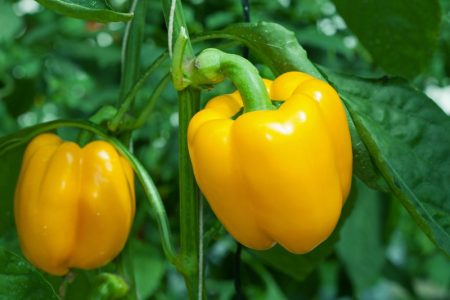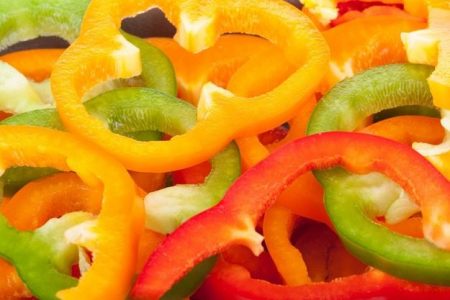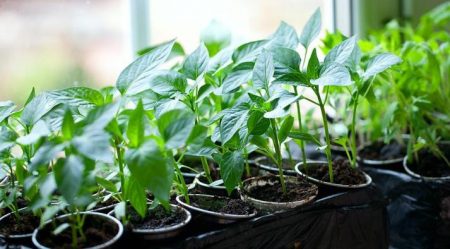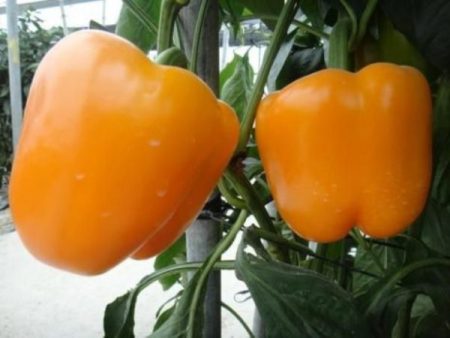Imported from the American continent, Europeans liked vegetable pepper because of the high content of vitamins and minerals, taste and breadth of use in cooking. The vegetable went through the selection process, having received many species that are called “sweet” or “Bulgarian”. One of them was the Admiral Kolchak pepper variety, which stands out for its large fruits, high yield and "tolerance" to the climate of central Russia

Content
Characteristic
The fact that the variety of bell pepper "Admiral Kolchak" refers to hybrids, says the marking "f1", which is indicated at the end of the name. It is characterized by high resistance to diseases, sabotage of garden parasites and insects. Fruits for a long time, fruits can be stored for a long time. Resistance to low temperatures allows you to grow it both in greenhouse-greenhouse conditions and in open ground.
Description
"Adult" bushes "Admiral Kolchak" 80-centimeter height. It belongs to the mid-season varieties of sweet pepper, giving the first crop 110-120 days after planting the seeds. Green in the period of technical ripeness and saturated yellow in the biological, fruits of a rounded cubic form grow to large sizes, reaching a weight of 200-250 grams each. Thick-walled (8-10 millimeters), they are distinguished by aroma, juiciness of flesh and pleasant taste.
Appointment and productivity

Variety of bell pepper "Admiral Kolchak" is considered to be universal, since cooking uses ripened vegetables in a variety of ways: they are suitable for eating raw, preparing vegetable salads, stuffing, canning. Gardeners appreciate it for its unpretentiousness in the process of growing, and high productivity (from one "square" of the greenhouse you can collect 6-7 kilograms of peppers).
Growing seedlings
The cultivation of Admiral Kolchak does not require any special conditions different from most varieties of sweet pepper, and begins with the preparation of seeds and the cultivation of two-month-old seedlings. To do this, the seeds are soaked, waiting for swelling, and then wrapped with a damp cloth or gauze. After 2-3 days, they must be planted in separate pots placed in a warm and sunny place. If planting took place in a common box, then the sprouts that appeared should be picked as quickly as possible. During the entire growing period, watering is done only with warm water.
Landing and care

In central Russia, the time for transplanting seedlings of Admiral Kolchak bell pepper to greenhouse-greenhouse conditions begins in late May, in open soil in the first ten days of June. For good growth and high yield, it requires space, therefore, it is necessary to observe the intervals between seedlings (about 30 centimeters) and rows (50 centimeters are enough).
The soil around the sprout needs to be loosened and spud, you can put straw. Before the fruit appears, it is advisable to prune the plant, saving it from infected leaves and sterile shoots, if any. It is worth preparing materials for the garter, as the bush alone will not withstand the mass of ripened vegetables.
Harvesting
During the ripening period of the fruits of Admiral Kolchak, it is sometimes recommended to cut individual, not fully ripened fruits, allowing them to "reach" on their own. The reason is that vegetables often interfere with each other's growth, crushing on neighboring ones and closing them from sunlight. Gardeners usually harvest the first harvests of this sweet pepper variety already in early August.
Advantages and disadvantages

Bell pepper "Admiral Kolchak" has no tangible drawbacks. These include the large size of mature vegetables, which with their quantity and weight can break the bush. But such fertility turns into a dignity of the variety, if you follow the recommendations of the section "Planting and care."
In addition to high productivity and fruit size, the advantages of the variety are unpretentiousness to weather conditions, high resistance to diseases and pests, taste characteristics and versatility of use in the kitchen.
Reviews of those who planted
In their reviews of Admiral Kolchak, gardeners who have already planted a variety are unanimous in opinion - this is one of the best representatives of sweet pepper. Its advantages are called arguments that save time and money on caring for the plant, and allow even a large number of vegetables to be harvested even under adverse weather conditions (as evidenced by the geography of positive reviews coming from both the southern and “near-northern” regions of Russia). Mistresses share recipes for a variety of salads, dishes and canned food with this variety of pepper, noting its rich taste and nutritional value.




 Calorie pepper stuffed with meat and rice - BZHU per 100 grams
Calorie pepper stuffed with meat and rice - BZHU per 100 grams Gorky pepper - the best varieties for open ground
Gorky pepper - the best varieties for open ground Hot pepper seeds - the best varieties for open ground and reviews
Hot pepper seeds - the best varieties for open ground and reviews Capsicum tincture for hair - how to use and reviews
Capsicum tincture for hair - how to use and reviews